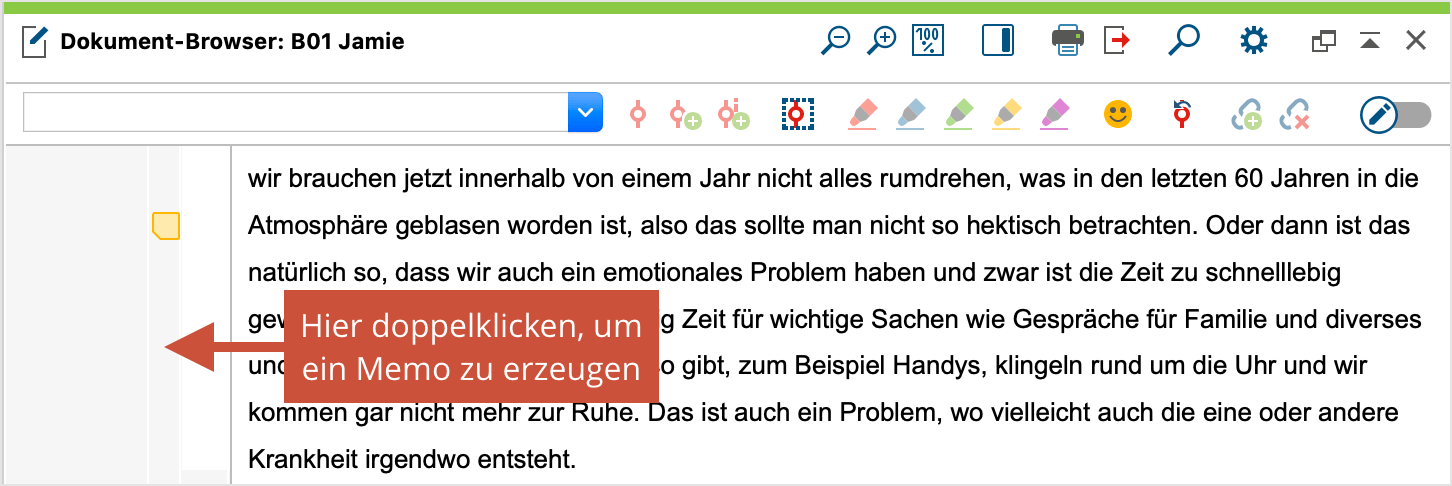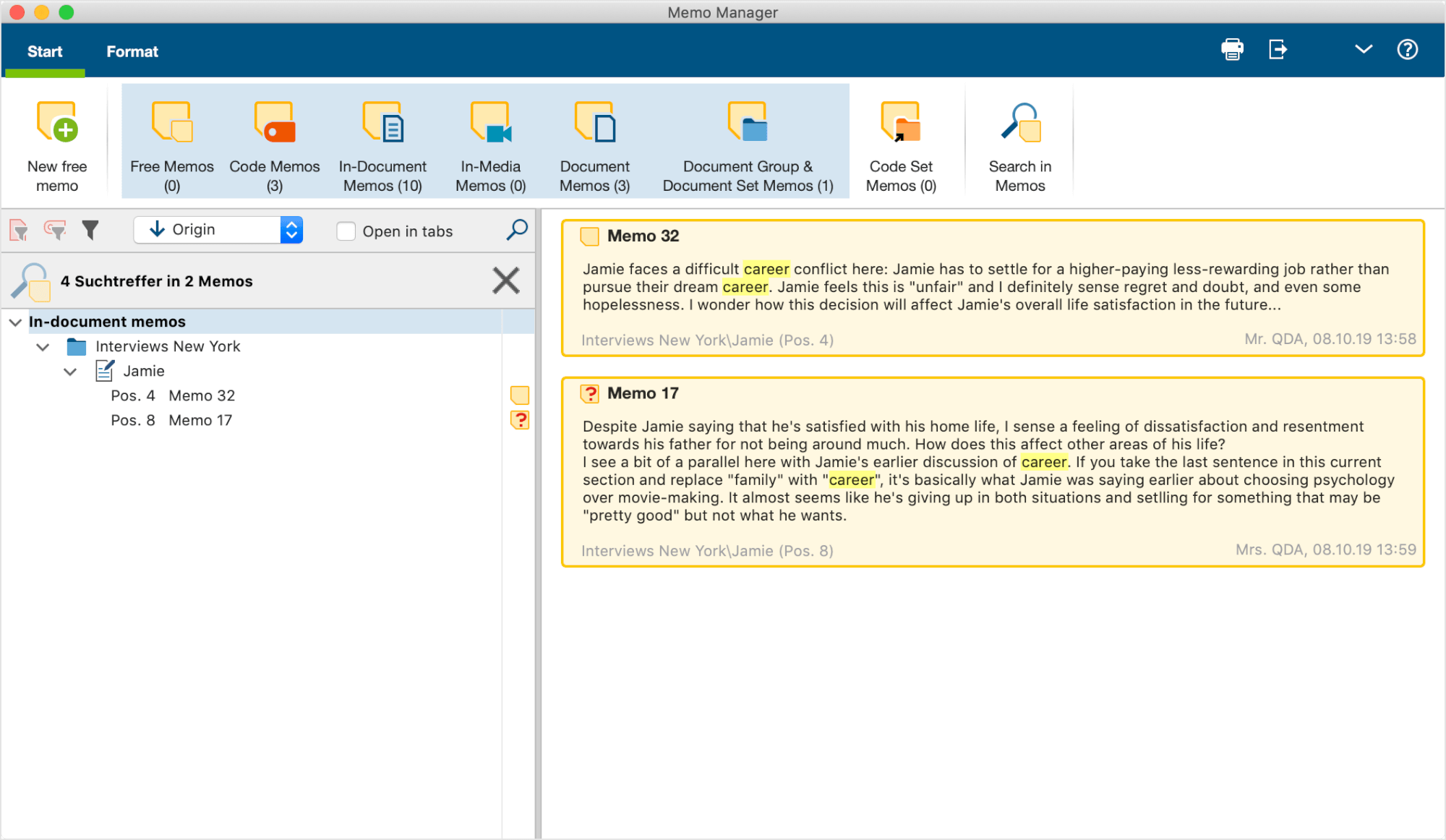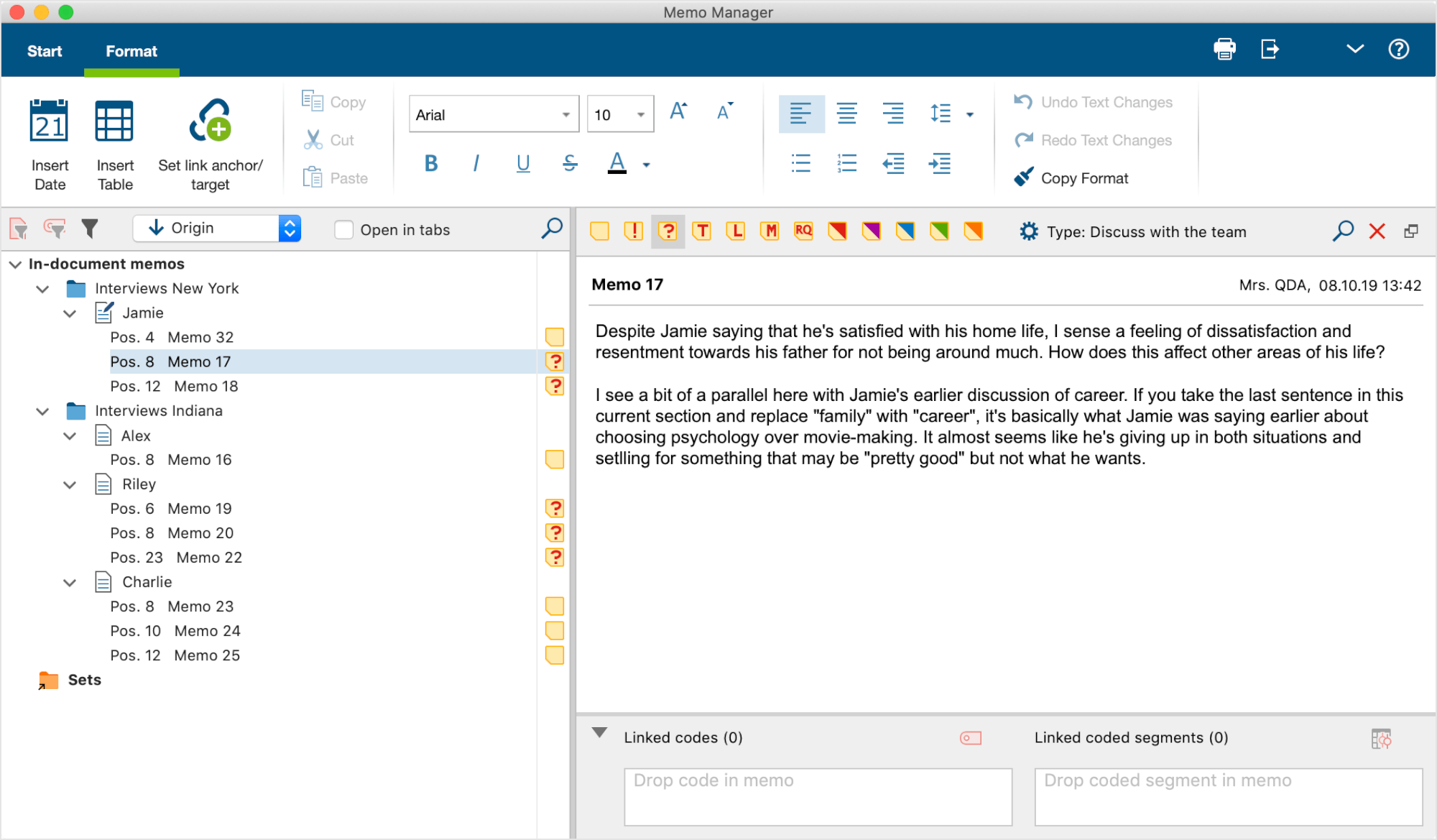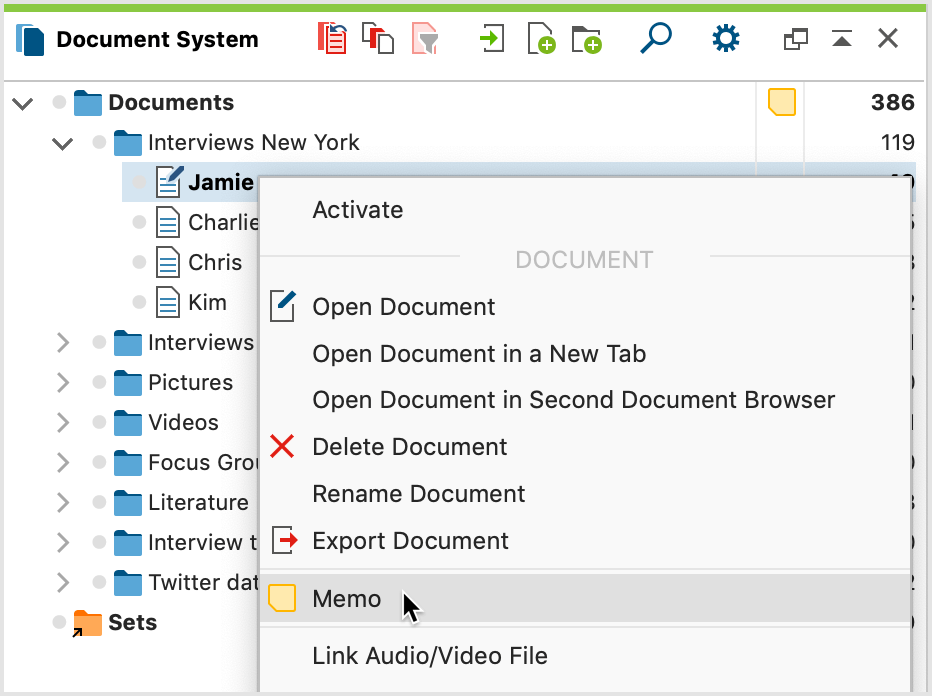
#Maxqda memo code
The “New code” dialog has 3 elements, a field for the code name, an option to select a colour for this code, and a field to store a memo for the code.
Right-click on the highlighted code and select “New code” from the context menuĪll of these have the same effect, and open the “New code” dialog as shown in Figure 7.1.1. Click on the “New code” icon in the Code System toolbar (2 nd icon in Figure 7.1.1). Then you have at least 4 equivalent ways of opening the “New code” dialog: To create a new code, click on the highest level code in the Code System window (the code called “Code System”) as shown highlighted in Figure 7.1.1, below. But nothing is permanently fixed, both headers and codes can be moved around the Code System as may be required at any stage. The program will make an assumption over which is being created depending on the location of the cursor when the routine is started. The same routine is used to create a single thematic code as is used to create the header of a group of codes. This work is mainly carried out in the Code System window, usually located in the bottom left corner of the MAXQDA11 screen. Where you have some ideas for codes that you expect to be useful in a project, you can create these at an early stage and then start to apply them to the data. If you right-click on the sidebar (not on a memo, but on the grey background area), a context menu will appear in which you can specify which content should be displayed in the sidebar.Codes can be created or added at any time in MAXQDA11 with simple intuitive procedures. In the sidebar, in addition to the memos, the paraphrases of the document or the comments of coded segments can be displayed, but not at the same time. When you hover the mouse over a memo in the right sidebar, the corresponding text or image segment will be highlighted. Double-click the memo icon in the left memo column or the right sidebar to open it for editing. Click a memo icon in the left memo column once to highlight the corresponding text or image segment and display the memo content in the sidebar. 
The memo content displayed is limited to 2,000 characters, corresponding to about three quarters of a page of text.ĭisplaying memos in the “Document Browser” is interactive: Since memos can be very long, only one memo at a time is displayed in the sidebar the blue arrow icons within the yellow memo indicator jump back and forth to the next or previous memo. The contents of the memos are displayed in the sidebar at the height of the corresponding text or image segment. click on the small icon Show Sidebar in the upper right corner of the “Document Browser”.right-click in a document and select Sidebar > Memos or.

In the sidebar to the right of the document, you can display memos, paraphrases, and comments on coded segments. Right-click the memo icon in the memo column in the Document Browser and select Attach Memo to Current Selection.Select the area to which you wish to assign the memo.

You can adjust the assignment of a memo to a text or image section any time: Changing memo assignments to document segments MAXQDA then automatically displays them next to each other, the memo column is automatically displayed wider. you can create several memos at the same level in the “Document Browser”. The number of memos per document and per document location is not technically restricted, i.e.

When creating a memo by double-clicking in the memo column, the memo is automatically attached to the document position at the click position on the left margin.








 0 kommentar(er)
0 kommentar(er)
